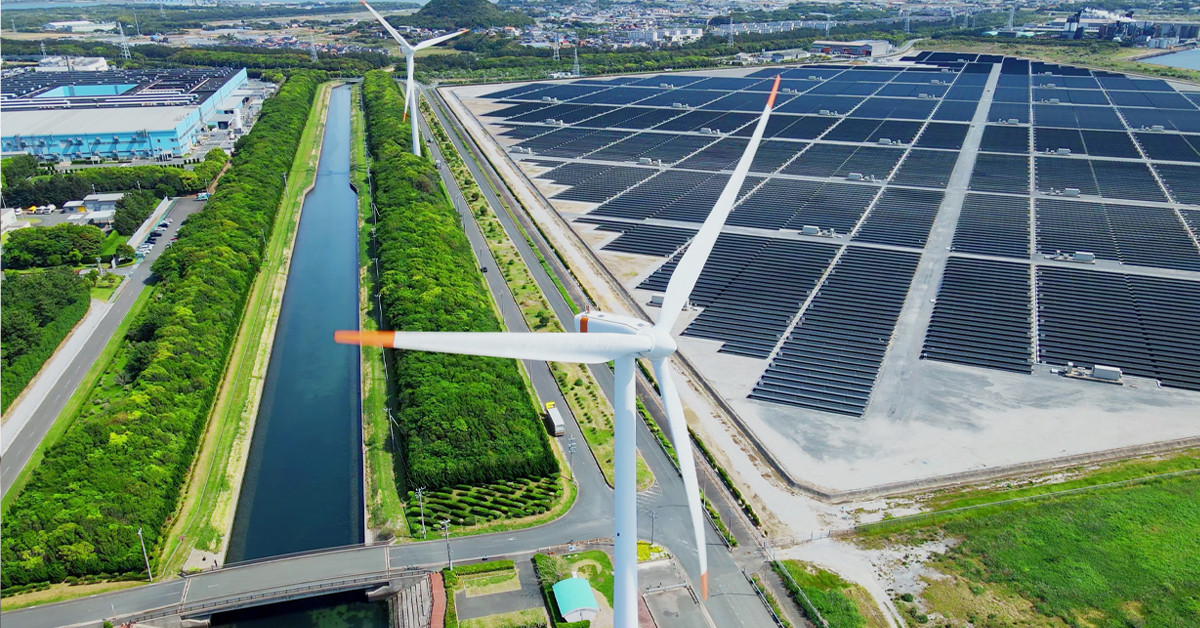Energy demand is expected to grow by 50 per cent by 2027, according to data from Sustainable Biofuels. Looking to the future, traditional energy infrastructure will not be able to cope with this surge in energy supply — not to mention energy assets that are required to provide this power in a sustainable manner. This is where flexible energy grids come in.
A flexible energy grid — or a flexigrid — is an electricity grid that is designed to handle the increasing volume of renewable energy sources by integrating these seamlessly. Unlike traditional grids, a flexigrid is able to balance the intermittent nature of renewable energy, like wind and solar, by incorporating management assets onto the grid, like battery energy storage systems (BESS) and control technology, to ensure this energy can be distributed effectively.
A flexigrid has multiple generation points into which distributed energy resources (DERs), small-scale electricity supply or demand resources, can be connected. DERs include the aforementioned solar, wind and stored energy, but there is also potential for electric-vehicle-to-grid (V2G) connectivity.
Among many reasons, one contributor to growing electricity demand is the increasing number of electric vehicles (EVs) on the roads. Sales of EVs in Europe increased by 65 per cent in 2021 and this trend is expected to continue. Industry is currently discussing how adaptable charging could be possible for a V2G set up. In practice, this could see power taken from charging stations, and put back to use elsewhere when large charging sessions are not necessary.
The ability of flexigrids to support a greater variety of energy sources, including potential V2G set ups, is what makes them stand out as an essential energy technology. But, what else is required to make them function?
Software for managing flexigrids
Control and monitoring software is crucial for flexigrids to be feasible. By their very nature, flexigrids connect a number of different assets — be that renewables, BESS or charging stations. Therefore, enabling their communication is crucial.
Let’s say a manufacturer has a small microgeneration set-up on their industrial facility. The site uses solar panels on the roof to generate power and stores the energy from these assets in a small BESS. If the facility were to have a temporary shutdown, say, over the festive or summer period, there is an inevitability that excess energy will be available.
Flexigrids allow the manufacturer to sell this excess energy back to the grid. What’s more, agile communication between the BESS and the wider grid mean this can be done automatically, allowing the grid itself to flex and redistribute energy depending on what is needed and when. Not only can this help microgenerators to gain capital from their renewable sources, but it can also improve the resilience of the grid as it relies more heavily on renewable power.
A crucial part of this set up is software that can communicate across this range of assets. COPA-DATA’s zenon is an energy grid software that can integrate seamlessly across a range of communication protocol, regardless of the asset’s age, original equipment manufacturer (OEM) or location.
This mass integration allows for complete visualisation of the flexigrid, allowing operators to visualise all the kinds of energy generation processes that are involved. This way, it is possible for operators to spot possibilities — and problems — early. For instance, if our aforementioned manufacturer was generating more solar power than it is possible to store at their facility, the grid operator can take action to ensure power surges do not occur. Likewise, this visualisation can identify when energy stores are low and dip into stored excess energy when supply and demand is unbalanced.
With the demand of energy set to increase by almost 50 per cent over the next 20 years, our current grid needs significant investment and change. Flexigrids provide an idyllic vision of how our energy infrastructure can integrate new assets, include microgenerators and encourage the pace of EV deployment — but they simply aren’t feasible without technology for monitoring and control.
Also have a look at our utility scale energy storage software solutions or check out our latest white paper on battery storage systems. Here's an exclusive sneak preview:







